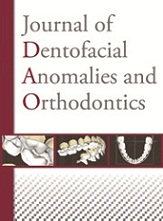Article contents
Orthodontically induced inflammatory root resorption: apical and cervical complications*
Published online by Cambridge University Press: 29 May 2013
Abstract
External root resorption is a feared complication during orthodontic procedures. It can affect both the apex, but also the cervical zone of the roots subjected to orthodontic forces for tooth movement and can compromise the future of the involved teeth. The patient must be informed about the risks of resorption as a consequence of orthodontic treatment. The detection of resorptions can occur during and/or after the active phase of orthodontic treatment.
Knowledge of the clinical situations predisposing the patient to resorption is essential. The data are still insufficient to avoid them completely. Early and precise detection is essential, and the cone beam with its high resolution 3D images, can compensate for the diagnostic inaccuracy of digital panoramic and periapical films. There are treatment solutions and their prognosis is correlated to early detection. Apical resorptions, generally not infected, can mostly be stopped by discontinuing orthodontic forces. Cervical resorptions, with a bacterial component, will require surgical intervention with curettage and restorative build-up of the resorbed area. Current research, particularly in genetics, is in the developmental stage. In the future, the conclusions of this research will allow orthodontists to more precisely target at risk patients so as to avoid these complications.
Keywords
- Type
- Research Article
- Information
- Copyright
- © RODF / EDP Sciences
Footnotes
Translated from French by Patrick Finnegan
References
* Translated from French by Patrick Finnegan
- 4
- Cited by




